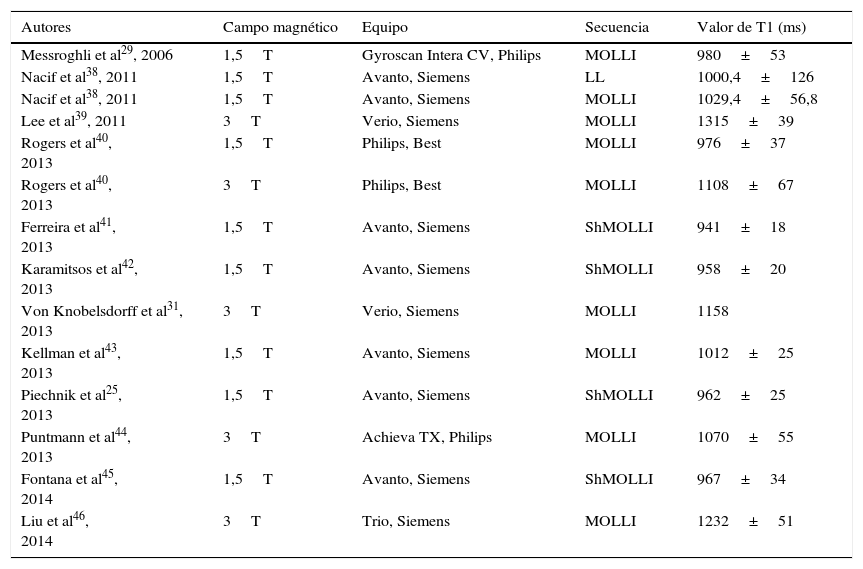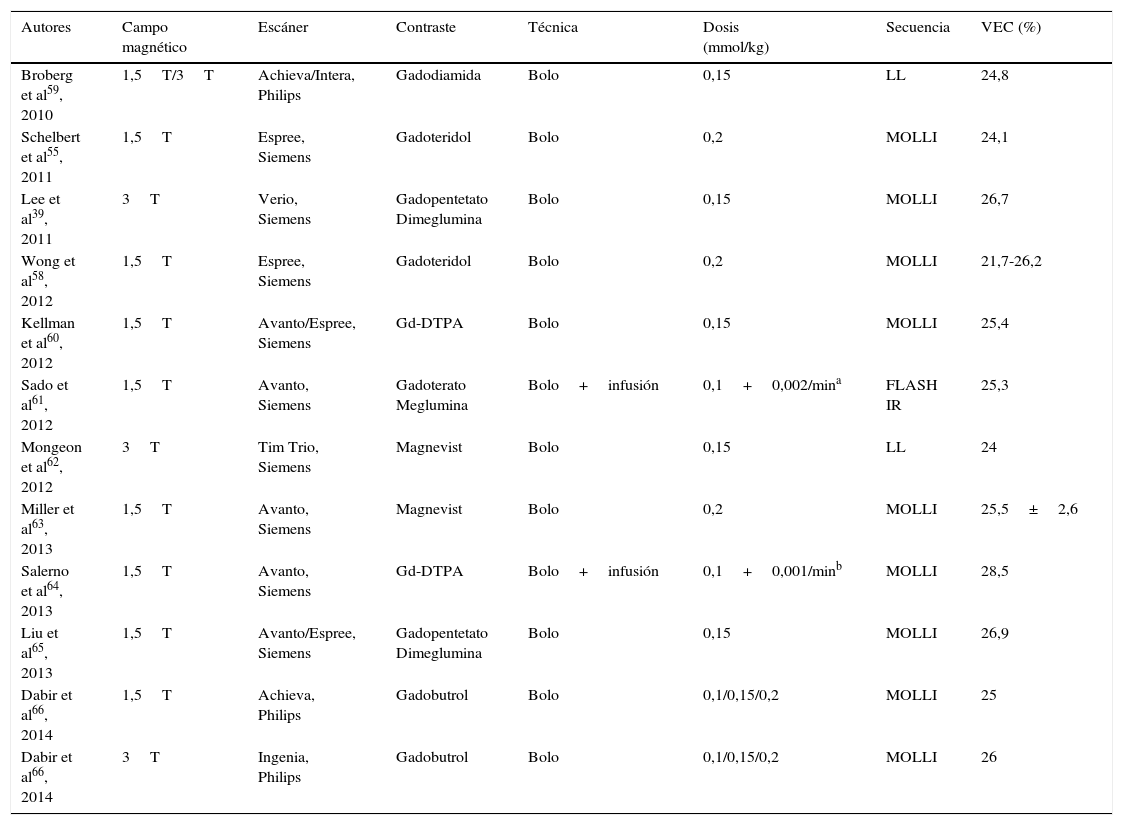El desarrollo de fibrosis miocárdica es un proceso común en la aparición de disfunción ventricular en muchas enfermedades cardiacas. La resonancia magnética permite valorar la anatomía y la función cardiaca con precisión, y su papel en la caracterización macroscópica de la fibrosis miocárdica mediante las técnicas de realce tardío ha sido ampliamente validado en clínica. En fechas recientes se ha demostrado que las técnicas de mapeo T1 miocárdico permiten la cuantificación en términos absolutos de la fibrosis difusa y de la expansión del espacio extracelular miocárdico. Sin embargo, se necesitan estudios adicionales que consigan validar la utilidad de esta técnica en la detección temprana del remodelado tisular en un momento en que la instauración de un tratamiento precoz permita mejorar el pronóstico de los pacientes. Este artículo revisa el estado actual de las técnicas de mapeo T1 del miocardio, sus aplicaciones clínicas y sus limitaciones.
The development of myocardial fibrosis is a common process in the appearance of ventricular dysfunction in many heart diseases. Magnetic resonance imaging makes it possible to accurately evaluate the structure and function of the heart, and its role in the macroscopic characterization of myocardial fibrosis by late enhancement techniques has been widely validated clinically. Recent studies have demonstrated that T1-mapping techniques can quantify diffuse myocardial fibrosis and the expansion of the myocardial extracellular space in absolute terms. However, further studies are necessary to validate the usefulness of this technique in the early detection of tissue remodeling at a time when implementing early treatment would improve a patient's prognosis. This article reviews the state of the art for T1 mapping of the myocardium, its clinical applications, and its limitations.
Artículo
Comprando el artículo el PDF del mismo podrá ser descargado
Precio 19,34 €
Comprar ahora






















